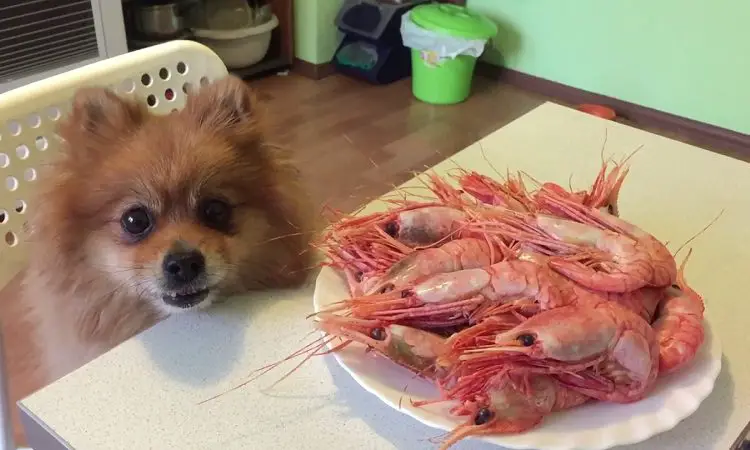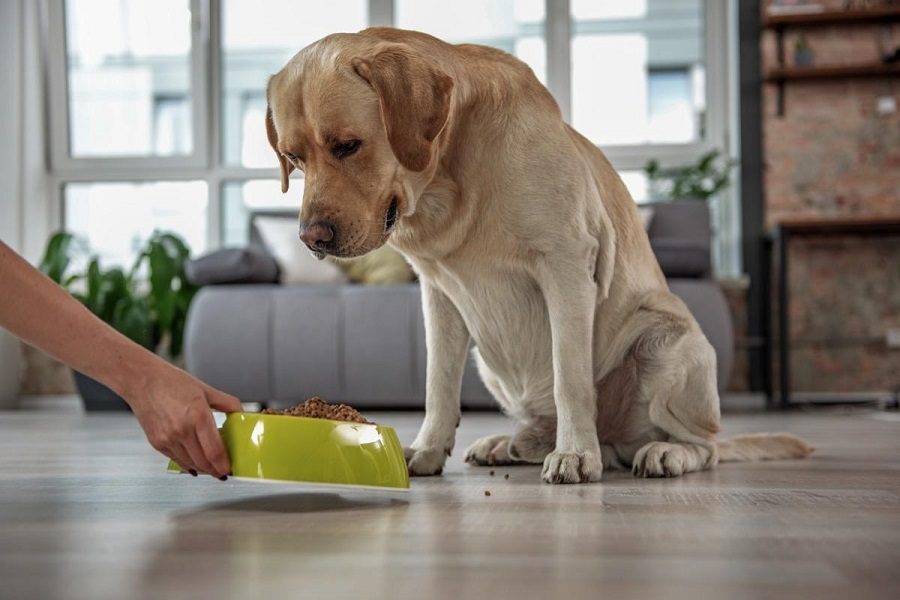Last Updated: 2 years ago
As the aroma of freshly cooked shrimp wafts through the air, don’t be surprised if you find a pair of hopeful eyes and a wagging tail by the dinner table.
Humans are not the only ones that cannot resist shrimp.
Doggies love it too.
But as with anything else that is consumed by humans, there is an everlasting nagging doubt in the mind of pet parents, about whether can dogs eat shrimp.
Without getting into too many details, the answer is yes. They can.
But, the ‘Yes’ comes with a lot of protocols that you need to be aware of before you let Fido dig into that mouthwatering ‘Basil Butter Parmesan Prawns’.
The Good Part

Let’s talk about the good parts first. Shrimp is teeming with nutrients that can be immensely beneficial for your pooch. To start with, there’s protein, Vitamin B12, Phosphorous, Niacin and selenium.
B12 keeps your doggie’s gut health in check while Niacin regulates the utilization of fat as energy, the circulation of blood in the body and many more important functions. Selenium is one of the best natural antioxidants.
With all those nutrients crammed into shrimp, why does there have to be a list of protocols to be followed while feeding them to your dog?
Here’s why.
The Bad Part

Shrimp is also packed with cholesterol which becomes a concern if your dog indulges in treats too often. Also, the shell of the shrimp, which includes the head, the tail and the legs can not only be difficult to digest, they can also pose a choking risk.
Raw shrimp contains bacteria that can cause digestive problems in dogs.
Yet, a lot of pet parents feel that it is normal to feed a dog raw shrimp. It is one of the commonest causes of an upset tummy that can trigger reactions like diarrhea, vomiting and lethargy.
5 Shrimp Treat Rules For Your Dog
So, now that you know the pros and cons of giving your dog shrimp, we have created a set of five rules to be followed every time you want to let Fido dig into shrimp.
- Limited Portions only: It’s a treat. Not dinner. So, keep the portion size small enough for the dog to enjoy it like a treat. Also, make this an occasional indulgence. If your pet takes a liking for the taste, then they may nose their way into your dinner plates every time you cook shrimp at home.
- Peeled and cleaned: Shrimp must be completely peeled and cleaned before being fed to dogs. All the shell portions must be removed completely.
- Cooked: It must be thoroughly cooked for obvious reasons that we mentioned above.
- Minimal seasonings: As tempted as you may be to let your dog enjoy that delicious recipe that you made, seasonings can trigger a horde of digestive problems in pets. So keep the seasonings to a bare minimum. In fact, no seasoning is the best way to go.
- Wait and watch: A sudden dietary change may not go down too well with your pooch’s system. So play the waiting game. Introduce shrimp in tiny portions and see if your dog throws up any unexpected reactions. You can gradually increase the quantity and portion size.



